Source: howtoconserve.org
Published: February 26, 2016
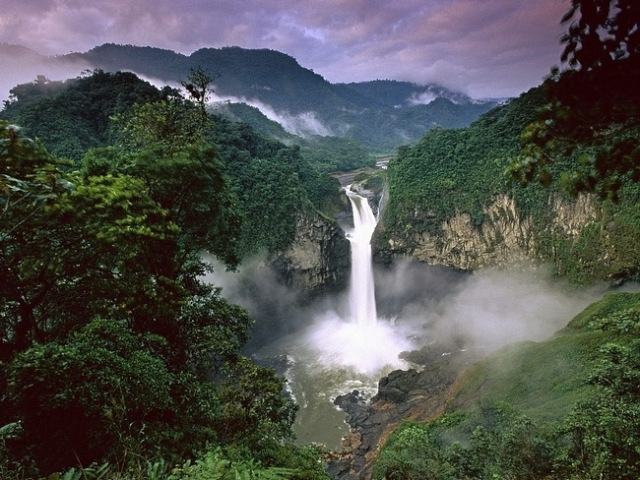
Photo credit: Travel Photos HD.
LIFE ON EARTH wouldn’t be the same without forests.
An estimated 1.6 billion people around the world depend on forests for their livelihood. Forests provide food and timber, preserve water quality and soil fertility, and act as a home for 80% of the planet’s terrestrial species.
They also act as the planet’s lungs.
Forests produce one third of the oxygen we breathe and absorb more carbon dioxide from the atmosphere than any other global system except the ocean. As trees photosynthesize, they store vast quantities of carbon, making forests carbon sinks.
Forests absorb almost 40% of all anthropogenic carbon emissions, and have the potential to significantly slow the rate of global climate change. However, only 15% of global carbon emissions are sequestered by forests. The rest is released back into the atmosphere due to deforestation and forest degradation.
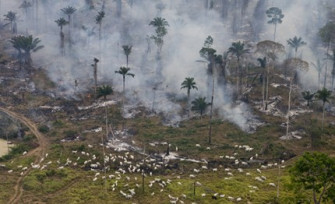
Deforestation and forest degradation release carbon stored in forests back into the atmosphere. While global deforestation rates have decreased by 50% since 1990, deforestation still destroys over 40 million acres of forest each year. Photo credit: Greenpeace.
To maximize the carbon sequestration potential of forests, the United Nations launched an initiative called REDD+(Reducing Emissions from Deforestation and Forest Degradation Programme) in 2007. The program aims to financially reward developing countries that successfully implement forest conservation, sustainable forest management, and reforestation programs.
Slowing deforestation is the most pressing and immediate REDD+ goal because it provides the most short-term benefits, such as preventing the release of carbon dioxide and the loss of biodiversity.
But in the long run, reforestation could prove to be key in the fight against climate change. The World Resources Institute estimates that over 2 billion hectares are available for reforestation worldwide, an area the size of South America.
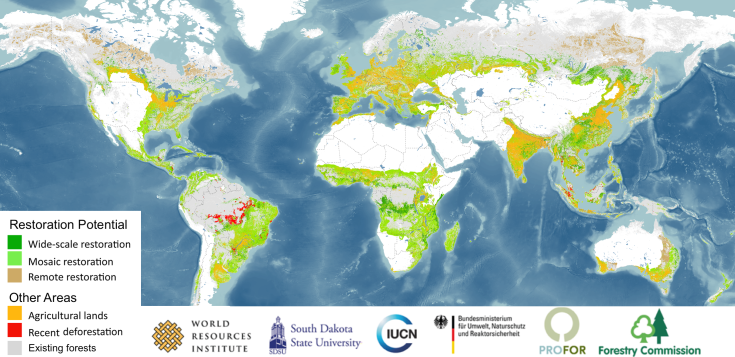
Over 2 billion hectares are available for reforestation worldwide.
With such a large area available for replanting, the reforestation incentives put forth by REDD+ have profound implications. If new forests are designed to maximize carbon sequestration, how will that affect other forest qualities such as biodiversity or ecosystem services? Can conservationists promote carbon sequestration, ecological health, and sustainable resource harvesting at the same time, or are these qualities mutually exclusive?
To answer that question, it helps to understand what makes a forest good at sequestering carbon.
What Type of Forest is Best?
When it comes to carbon sequestration, all trees are not created equal.
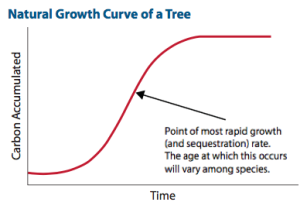
Photo credit: Union of Concerned Scientists.
The amount of carbon a tree sequesters varies based on the growth rate, age, and species of the particular tree. Young, rapidly growing trees uptake far more carbon than mature trees with slower growth rates. Warm and wet climates with long growing seasons also contribute to rapid plant growth and indirectly promote higher rates of carbon sequestration.
Tropical rainforests are particularly valuable for carbon sequestration – they store substantially more carbon per unit area than temperate or boreal forests and are thought to absorb 18% of all global carbon emissions. Within tropical forests, sequestration levels vary among trees species: 50% of all carbon sequestered by the Amazon rainforest is absorbed by a prolific 1% of the region’s tree species.
The age of the forest plays a roll as well. A recent study in Nature found that new rainforests grown on degraded lands, known as secondary forests, are capable of storing up to 11 times more carbon than old growth rainforests, where tree growth has largely plateaued.

Rapidly growing secondary forests (left) can absorb up to 11 times more carbon then mature old growth forests (right). Photo credit: Forru, Pixadus.
Sometimes reforestation isn’t the answer. At high latitudes, the conversion of barren land into forests changes the reflectivity of the ground by decreasing overall snow cover. Snow is bright and reflective, and it cools the climate by bouncing incoming solar radiation back into space, a process known as the albedo effect. Relatively dark forest cover absorbs that radiation instead, increasing global temperatures in the process.
Sustainable Forest Management
So what is the best way forward? Should conservationists shift their focus away from old growth forests towards secondary forests, or abandon projects in the arctic in favor of tropical ecosystems, all in the name of climate change mitigation?
Not exactly.
Every type of forest is valuable in it’s own way. While they might absorb less carbon, old growth forestsare more ecologically stable and biodiverse than their secondary counterparts, and their loss would release huge amounts of already sequestered carbon back into the atmosphere. And while high latitude forests are less diverse than their tropical counterparts, they are still home to a unique array species that deserve protection.
Instead of neglecting old growth forests, existing forest conservation should continue in tandem with reforestation efforts. In addition to the ecological benefits of old growth forests, their complex ecology can offer clues to foresters about the best ways to manage new forests.
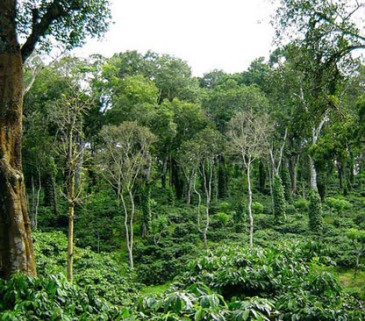
While this may look like a natural forest, it’s actually a coffee plantation. When coffee trees are cultivated under a canopy of diverse native species, the product is called shade grown coffee. These mixed-species plantations are a form of agroforestry and can fall under the umbrella of sustainable forest management.
Reforestation can be managed to maximize carbon sequestration and human resource use while promoting ecological health. The process is known as sustainable forest management, and is a key cornerstone of REDD+.
Reforestation and sustainable forest management rely on a diverse array of techniques, such as fire suppression, use of rapid growth native species, enrichment planting, community involvement, and agroforestry. To achieve the desired forest structure and diversity, land managers alter forestry practices based on observed results, a process known as adaptive management.
Thanks to REDD+ incentives and organizations such as Conservation International and the Rainforest Alliance, sustainable management practices are being implemented across the globe to encourage reforestation in a holistic and ecologically sound manner.
Reforestation efforts in the Philippines using rapid growth native species have provided a sustainable source of charcoal for locals and important habitat for the endangered Philippine eagle. In Mexico, shade grown coffee farmers are using multi-species plantations to increase carbon sequestration and local biodiversity. And in Fiji, a mix of native species and economically valuable timber species have been planted as part of a “green wall” to buffer ecologically valuable forests from disturbances.
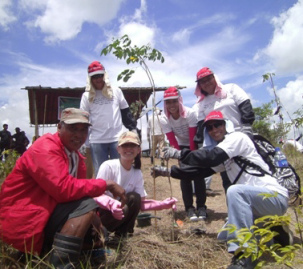
Volunteers help with tree planting efforts in the Philippines. Photo credit: Toyota.
In all three cases, sustainable harvesting from the new forests has lifted communities out of poverty, provided wildlife habitat, and reduced pressure on the surrounding ecosystems.
They will also sequester a combined 411,000 tons of carbon over the next 25 years.
Hopefully the success of these projects will encourage further reforestation efforts on a large scale. To facilitate reforestation, the University of Maryland has partnered with the World Resources Institute and the IUCN to create the Atlas of Forest Landscape Restoration Opportunities, an interactive map that illustrates reforestation potential around the globe. Communities and conservationists can use the map to find the most suitable sites for reforestation programs, while the average citizen can use them to explore the current state of the world’s forests. Click here to check it out.
What YOU can do
Most of us don’t have massive plots of land to sustainably manage or reforest. Even so, no one is a bystander when it comes to forest conservation. By following these simple steps you can actively encourage reforestation efforts both locally and around the world.
- Try Meatless Mondays – Raising livestock is an incredibly wasteful process that requires huge amounts of energy and space. Meat production is responsible for 18% of carbon emissions and 32% of deforestation globally. Thankfully you can make a difference, even without becoming a vegetarian overnight. If everyone on the planet gave up meat for one day each week, it would be the equivalent of taking 190 million cars off the road in terms of carbon emissions.

- Buy Sustainable Products – Timber, paper, chocolate, palm oil, and coffee are among the many products sourced from forests around the world. By purchasing sustainable lumber, shade grown coffee, and other ecologically friendly products, you simultaneously promote reforestation and discourage deforestation. Look for products certified by the Rainforest Alliance, the Forestry Stewardship Council (FSC), or the Roundtable for Sustainable Palm Oil (RSPO).
- Plant a Tree – Offset your own personal emissions by planting a tree on your property. Such a step may sound small or inconsequential, but planting even a single tree can offer environmental benefits, such as increasing wildlife habitat or improving local air quality. Depending on the species of tree, you could help to sequester up to 48 pounds of carbon each year.
Some forests may be more useful than others when it comes to climate change. But overall, every forest, from the newly planted to the old and craggily, has a special place in the biosphere.
